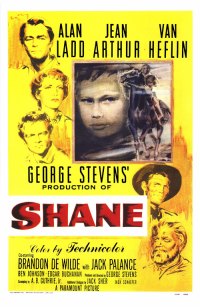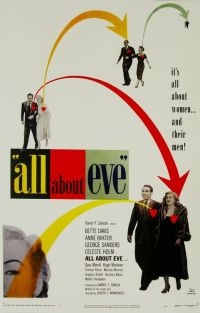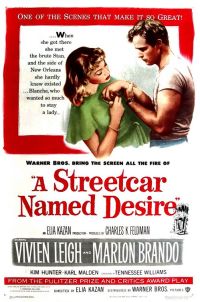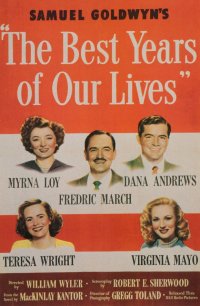Classics mark this week’s crop of films, with only two pictures from the modern era of Hollywood filmmaking (1967-present). We’ll start to see some a bit more recent in the coming weeks. But these are classics for a reason, so settle in for some good old black-and-white photography and enjoy.

—This film has a sense of it’s own granduer from the opening dance sequence. The music, direction, cinematography and choreography are so magnificent that words are not necessary to understand the scope of what is going on. This modern retelling of Shakespeare’s Romeo and Juliet is a screen masterpiece all in itself, but updates it to fit the racial tensions of the time. It aims to show that in this age it doesn’t matter what race or ethnicity you are, love and fellowship transcend all things, echoing the words of the apostle Paul in Romans 10:12, “For there is no distinction between Jew and Greek; for the same Lord is Lord of all.” Winner of 10 Academy Awards, including Best Picture.
Directed by Robert Wise and Jerome Robbins, 1961. Starring Natalie Wood, Richard Beymer, Rita Moreno and George Chakiris.

—Shane’s power resides in the mysteriousness of its characters, and the brilliant employment of the western mythos. George Stevens’ masterpiece is one of the most endearing motion pictures around, in a genre that forced endearment, mostly due to the humanity of the characters. The problems are human problems; problems that create moral dilemmas. Stevens gives the villains a reasonable motive for their actions and attitudes, but doesn’t condone that they’ve chosen to withhold life rather than preserve it. Shane rides in, the other from the outside, and in great tenderness does what needs to be done to restore an embedded moral order. But in saving the people, he cannot be one of them. This is the great western mythos. A savior cannot be like those that he is saving, he must be something more. Winner of 1 Academy Award.
Directed by George Stevens, 1953. Starring Alan Ladd, Jean Arthur and Van Heflin.
—This is an absolute acting clinic. I’ve seen this movie several times and am still catching many of the nuances to these brilliant performances. This is around the starting point of method acting in film, of which Brando was a champion. By simply (actually not simple at all) becoming his character mentally and emotionally, Brando dominates every scene with raw power and painfully precise emotion. Vivien Leigh gives every ounce of her soul to Blanche, in her finest screen performance. And Karl Malden, who I’ve always felt is underrated, gives an honest and pained performance as well. This script is so incredibly challenging as an actor, but this cast pulls it off flawlessly. Winner of 4 Academy Awards, including Best Actress (Leigh).
Directed by Elia Kazan, 1951. Starring Marlon Brando, Vivien Leigh, Karl Malden and Kim Hunter.
—This is a significant post-World War II film following the lives of three men, and how their experiences in war effect their domestic life. The impact is profound, startling, and a heartbreaking. Actual World War II veteran Harold Russell gives a very real, crushing performance, as an amputee struggling to adapt, knowing that none of his loved ones can possibly understand the horrors he’s seen. It is a moving film experience, that though runs a little long, uses its time well to allow the tender details of their strife to unfurl. This is one of director William Wyler’s finest films, in a career full of magnificent films. Winner of 8 Academy Awards, including Best Picture.
Directed by William Wyler, 1946. Starring Frederic March, Myrna Loy, Dana Andrews and Teresa Wright.

—This film is hugely significant for a number of reasons. For one, this film is incredibly entertaining, and one of the most effective thrillers ever made. Spielberg allows John Williams’ haunting score tell the story during many of the most shocking, and intense scenes, allowing the suspense to build in our imaginations. But also, with Jaws came a new era of Hollywood film. This film was really the beginning of what is know as the “revivalist” movement in Hollywood, which would go on to create high concept, big budget blockbusters. It is not only super entertaining, but also highly marketable, which was really what Hollywood was looking for at the time of their economic crisis. While the early 70s produced some of the greatest films and filmmakers ever, the movies were largely inaccesible. Because of this film, and this movement, films such as Star Wars and Raiders of the Lost Ark were made much more easily, and helped launch Spielberg into the stratosphere of popularity. Winner of 3 Academy Awards.
Directed by Steven Spielberg, 1975. Starring Roy Scheider, Robert Shaw and Richard Dreyfus.

—Indeed, all the world’s a stage, and these characters are not mere players, but will do what it takes to rise to their ambitions. This is a bitingly funny film, laced with supreme sophistication, eloquent prose, and fiery performances, featuring some of the finest dialogue of any film out there. It’s an extremely intelligent movie that knows how intelligent it is and doesn’t apologize for it. The deceit is so thick and layered, that it makes for one of the finest dramatic films ever produced. Winner of 6 Academy Awards, including Best Picture.
Directed by Joseph L. Mankiewicz, 1950. Starring Bette Davis, Anne Baxter and George Sanders.

—This is a great film! A man alone to face the bandits who want to take over the town, Cooper portrays our hero with grace and courage in this “real-time” western noir. And his character certainly is a hero. He is a man faced with an imminent threat, who, foregoing his honeymoon, stays to do what any citizen in his situation ought to do. He is a man willing to stand up for justice and life in the face of wickedness, deceit and death, and much to the chagrin of his new bride. He holds the value and safety of the community over and above himself. That’s heroic. Winner of 4 Academy Awards, including Best Actor (Cooper).
Directed by Fred Zinnemann, 1952. Starring Gary Cooper and Grace Kelly.
—What is it about this film that makes it so great? Is it that you can watch it over and over again and it still makes you feel just as good as the first time? I think its the combination of thrills and pathos that has made the film grow astronomically in popularity since its release. Ranked #1 on IMDb‘s top 250 list, it features one of the finest buildups and sharpest twists in modern movie history, and its endearing message of hope against all odds is as universal as they come. As Robert Johnston suggests, The Shawshank Redemption isn’t just a movie about hope, the movie gives you hope. Real hope. Hope that the injustices around you and in your own life are surmountable. Hope that, at the very least, there are still things in this world to hope for. Hope is a beautiful thing, and as Andy says, “Hope is a good thing, maybe the best of things, and no good thing ever dies.” Nominated for 7 Academy Awards, including Best Picture.
Directed by Frank Darabont, 1994. Starring Tim Robbins and Morgan Freeman.
—This is an absolute dream cast. This is like having Robert De Niro, Tom Hanks, and Meryl Streep all performing at the top of their game in the same movie. In fact, Martin Scorsese’s 2006 crime-drama The Departed is the modern dream cast this film was (though totally different types of movie). This is one of the funniest movies out there, and really launched the careers of Hepburn and Grant, who to that point hadn’t really been taken seriously. Stewart’s career was already on its way after You Can’t Take it With You (Frank Capra, 1938) and Mr. Smith Goes to Washington (Capra, 1939). This is, however, Stewart’s first and only Oscar win for Best Actor. Shame, really, he should have won a few more, but thats how it goes. This movie is just a lot of fun, has great acting, a blistering script, and will leave you thanking yourself for taking the time to watch this classic. Winner of 2 Academy Awards, including Best Actor (Stewart).
Directed by George Cuckor, 1940. Starring James Stewart, Cary Grant and Katherine Hepburn.

—The power behind 12 Angry Men is that Henry Fonda’s character knows how and when to fight, and that he has the guts to actually do it . He doesn’t know if the man on trial is innocent or guilty, but he knows that everyone has prejudices that cloud judgment and morality, and does not want that to effect the decision making process. The film moves fast, but is not rushed. Lumet captures the intensity through little gestures and moments that build in a series of brilliantly photographed and played climaxes. This is one of the most unique and powerful films ever made, exposing the deeply held cultural prejudices in all of us, hoping that we too will stop to weigh the man, not just our perception of him. Nominated for 3 Academy Awards.
Directed by Sidney Lumet, 1957. Starring Henry Fonda and Lee J. Cobb.




